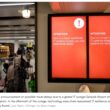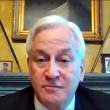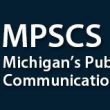DHS multiband radio pilot projects provide important lessons (with video)
The U.S. Department of Homeland Security this week brought media up to speed on its test program designed to determine how well multiband radios work in the field and how they should be tweaked to make them more effective. The press conference was held in Chicago during the International Association of Chiefs of Police Conference. Coincidentally, the test program’s final phase is being conducted in the Windy City.
Harris Unity XG-100 radios were put through the paces during this month’s Chicago Marathon and will be used again during next month’s Magnificent Mile Lights festival, which officially kicks off Christmas season in the city. Previously, the XG-100 was tested in Phoenix, New Orleans and Miami.
According to Tom Chirhart, program manager for DHS’s Science & Technology Directorate’s Multiband Radio Initiative, Chicago was selected for the test program in large part because of the enormous crowds these events attract — for instance, the marathon draws 45,000 participants and 1.7 million spectators — and because of the large number of public-safety entities involved in managing them.
Among these entities are the city’s police and fire departments, the Illinois State Police, and the Cook County Sheriff’s Department, as well as numerous suburban police and fire departments. That provided plenty of opportunity to test the interoperability capabilities of the Unity multiband radio, which is engineered to operate in the VHF, UHF, 700 MHz and 800 MHz bands in analog and digital mode, Chirhart said.
In fact, each of the cities involved in the program was selected because it provided unique test environments. For instance, the radios were tested at a NASCAR event in Phoenix and during New Orleans’ popular jazz festival, because both are noisy environments that are analogous to the environments in which police officers and firefighters work, according to Chirhart.
“When you’re in a patrol car and the sirens are going, you need the ability to hear, and the ability for them to hear you,” he said. “In the fire service — where you have noise from alarms, chainsaws and engines running in the background — you have to have some sort of filtering system so people can hear what’s being said.”
Last year, the Thales Liberty multiband radio was put to the test. Together, the Liberty and Unity tests have provided some valuable lessons, according to Chirhart. For example, wildland firefighters in the state of Idaho provided important feedback.
“Once that smoke jumper jumps out of that airplane, there’s no opportunity to recharge that battery,” Chirhart said. “Their requirement was a disposable alkaline battery. Once we learned this, we went back to the manufacturers and asked them to build a prototype.”
Indeed, based on the feedback of myriad first responders, knobs and buttons have been relocated and GPS has been added to the radios, Chirhart said. The next areas that need to be addressed concern the size of the antenna and of the radio itself.
“It’s critical that we get a smaller antenna,” Chirhart said. “Over the years, radios have dropped in size considerably … so I think the engineers can come forward and identify that. That’s the number one complaint that we get. Also, detectives prefer a pocket-sized device.”

















